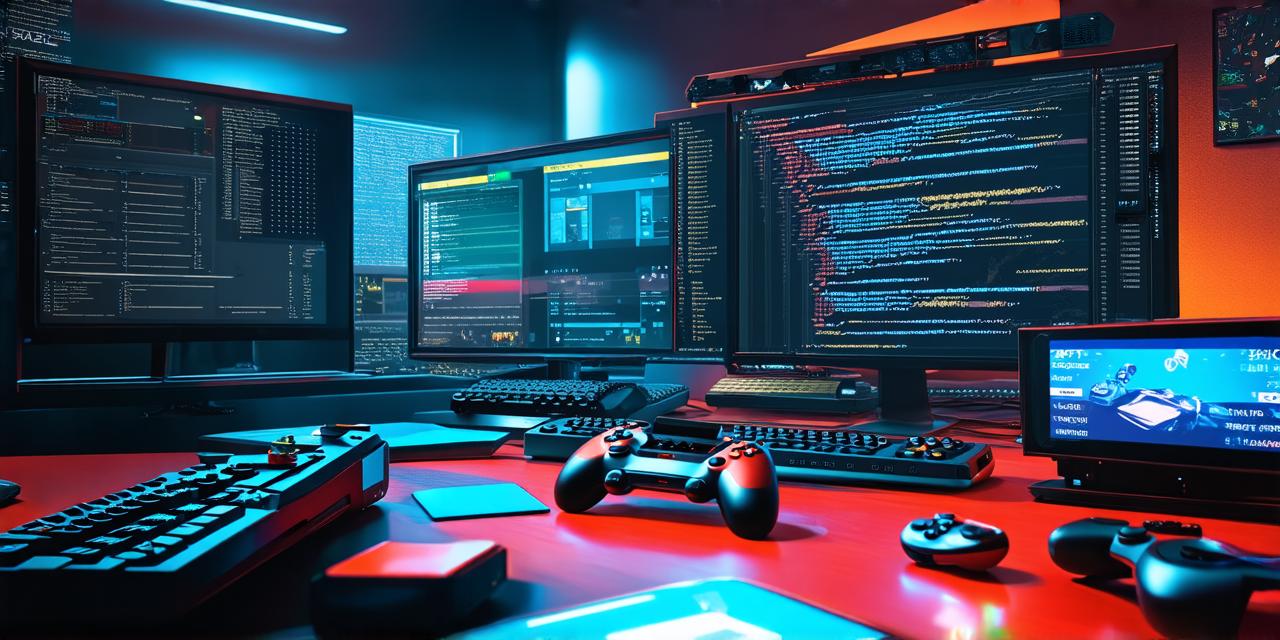Game development is a highly competitive and exciting field that requires creativity, technical skills, and passion. With the growing popularity of video games and the increasing demand for interactive and immersive experiences, game developers have the opportunity to create content that can entertain millions of people worldwide.
However, before you dive into this world, it’s essential to understand the basics of game development and what it takes to become a successful game developer.
What is Game Development?
Game development is the process of creating interactive games or simulations that can be played on various platforms, including computers, consoles, mobile devices, and gaming consoles. The goal of game development is to create engaging and immersive experiences that provide entertainment, education, and/or social interaction for players.
There are several different types of games, including action games, puzzle games, adventure games, strategy games, role-playing games, sports games, and educational games. Game developers can specialize in one or more of these areas, depending on their interests and skills.
The Game Development Process
The game development process is a complex and iterative journey that requires collaboration, creativity, and technical expertise. The process typically involves the following stages:
-
Conceptualization: This stage involves brainstorming ideas for the game’s theme, mechanics, storyline, and overall design. During this stage, game designers create rough sketches, prototypes, and concepts to test and refine their ideas.
-
Pre-production: In this stage, game designers create detailed documentation, including a project plan, character designs, environment art, and level layouts. This stage also involves writing the game’s script, creating storyboards, and developing the game’s sound design.
-
Production: During this stage, game developers use their technical skills to program the game’s mechanics, create assets, and implement the game’s features. Game designers work closely with artists, writers, and other team members to ensure that the game is cohesive and engaging.
-
Testing: In this stage, game developers test the game’s mechanics, levels, and overall design to identify and fix bugs, errors, and performance issues. Game testers also provide feedback on the game’s usability, accessibility, and fun factor.
-
Post-production: During this stage, game developers create additional content, such as patches, updates, and DLC (downloadable content), to improve the game’s overall quality and extend its lifespan. They also promote the game through marketing campaigns, social media, and other channels to increase its visibility and attract new players.
The Tools of Game Development
Game development requires a wide range of tools and technologies, including programming languages, game engines, asset creation software, and testing tools. Some of the most popular tools used in game development include:
-
Programming Languages: Game developers use various programming languages to create game mechanics, controls, user interfaces, and other game logic. Popular programming languages include C++, Java, Python, and JavaScript.
-
Game Engines: Game engines provide a framework for creating games that includes pre-built components, tools, and libraries for game development. Some of the most popular game engines include Unity, Unreal Engine, CryEngine, and Godot.
-
Asset Creation Software: Asset creation software is used to create game assets such as characters, environments, and objects. Popular asset creation software includes Maya, Blender, Photoshop, and Illustrator.
-
Testing Tools: Game development requires rigorous testing to ensure that the game is bug-free, performant, and enjoyable for players. Popular testing tools include Unity Testing Tools, Robotium, and Espresso.
The Best Practices of Game Development
To become a successful game developer, you need to follow best practices that can help you create high-quality games that are engaging and fun for players. Some of the best practices of game development include:
-
Keep it Simple: Don’t overcomplicate your game mechanics or design. Keep the user interface simple and intuitive, so players can quickly understand how to play the game.
-
Playtest Often: Regularly playtest your game to identify bugs, errors, and areas for improvement. Playtesting helps you refine your game mechanics and ensure that the game is fun and engaging for players.
-
Collaborate Effectively: Game development requires collaboration and communication between team members. Make sure that everyone on the team is aware of their responsibilities and works together effectively to create a cohesive game.
-
Stay Up-to-Date with Technology: Game development technology evolves rapidly, so it’s essential to stay up-to-date with new tools, techniques, and trends in the field. Attend conferences, read blogs, and participate in online communities to learn from other game developers.
-
Iterate and Improve: Game development is an iterative process that requires continuous improvement. Take feedback from players, testers, and other team members to identify areas for improvement and make changes to your game mechanics or design accordingly.
Case Studies and Personal Experiences
To illustrate the concepts and best practices of game development, let’s look at some case studies and personal experiences from experienced game developers, researchers, and industry experts:
-
The Legend of Zelda: Breath of the Wild: Developed by Nintendo, this open-world adventure game was a massive success, with over 9 million copies sold worldwide. One of the keys to its success was its emphasis on exploration, immersion, and player choice. The game’s vast world encouraged players to explore, discover new secrets, and complete side quests, which kept them engaged for hours on end.
-
Minecraft: Created by Markus Persson (now known as Jens Bergensten), Minecraft is one of the most popular games in the world, with over 150 million copies sold. The game’s simple yet addictive mechanics, such as building, mining, and exploring, made it easy for players to pick up and play. Additionally, the game’s open-ended design allowed players to create their own worlds and experiences, which helped to extend its lifespan.
-
Portal: Developed by Valve Corporation, Portal was a revolutionary puzzle game that combined physics-based puzzles with a unique storyline and characters. The game’s innovative mechanics, such as the ability to teleport between locations and manipulate objects in unique ways, made it challenging and engaging for players. Additionally, the game’s immersive and humorous storyline helped to create a memorable experience that players still enjoy today.
-
The developer of the game “Pikachu’s Puzzle Adventure” shares her experience on how she started in game development. She says “I always had a passion for games, but I didn’t know much about game development. I started by learning programming languages like Python and HTML/CSS. Then, I took online courses to learn more about game engines and asset creation software. Finally, I began working on my own game ideas and submitted them to various game jams and contests. It was a lot of hard work and dedication, but it paid off when I got my first paid gig as a game developer.”



